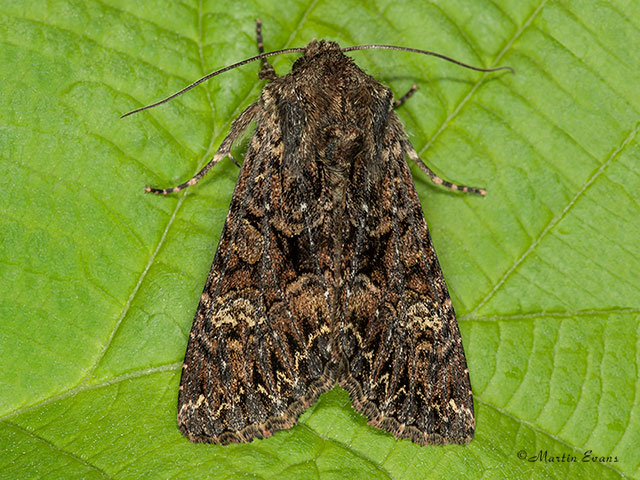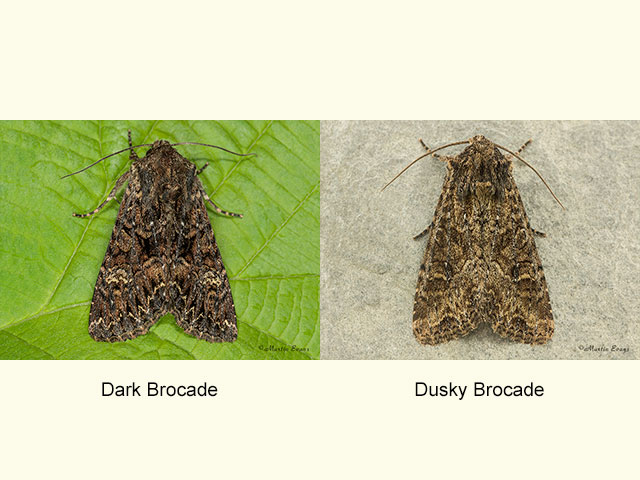Noctuidae
73.238 Dark Brocade Mniotype adusta (Esper, 1790)
Common
Similar species: Dusky Brocade Apamea remissa is slightly smaller (17 to 19mm) and greyer, has a smooth rather than jagged outer edge to the kidney mark and lacks the long scales around the eyes that look like eye lashes. Cabbage Moth Mamestra brassicae is greyer in colour, has a smooth rather than jagged outer edge to the kidney mark and lacks a black bar running along the side of the tooth mark between the inner and outer central cross-lines. Using magnification it is possible to see a curved spine on the lower end of the tibia of the front leg.
Forewing: 18 to 21mm
Habitats: Chalk downland, heathland, fens and woodland. In the north of Britain it is also found on moorland, upland grassland and sand-dunes.
Habits: The moth visits flowers after dark and is attracted to sugar and light.
Foodplant: The larva feeds nocturnally on the roots and leaves of Bladder Campion, Bog Myrtle, Heather, Alder and other herbaceous plants and grasses. In captivity it accepts sallows and Hawthorn. The full-fed larva overwinters in a cocoon under the soil where it pupates in April.
On the European mainland the larva are known to feed on Goldenrod, Yarrow, Mugwort, Wormwood, bedstraws, dead-nettles, Bog Bilberry and Orpine.




